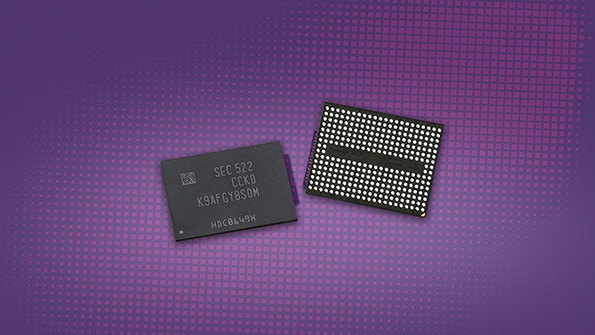Samsung’s Profit Climbs as Hopes Grow for 2022 Memory RecoverySamsung’s Profit Climbs as Hopes Grow for 2022 Memory Recovery
Samsung’s foundry business, fabricating semiconductors for the likes of Nvidia, is also making a growing contribution to its bottom line.
January 7, 2022

(Bloomberg) -- Samsung Electronics Co.’s quarterly profit climbed more than 50% after chip prices stabilized and sales of smartphones surged, reinforcing hopes the memory industry will emerge from its downturn this year.
South Korea’s biggest company posted operating income of 13.8 trillion won ($11.5 billion) for the three months ended December, missing estimates after it distributed special bonuses to employees. But revenue jumped a better-than-expected 23% to 76 trillion won. The company’s stock climbed as much as 2% in morning trade in Seoul.
Samsung and rivals SK Hynix Inc. and Micron Technology Inc. are weathering a cyclical downturn, helped by demand from servers as well as a widening array of products from cars to home devices. Micron last month predicted record revenue for fiscal 2022 thanks to resilient demand from data centers, networking and auto customers.
Investors are also monitoring Samsung’s operation in the central Chinese city of Xi’an, which has been locked down while the government fights a local outbreak. While it’s unclear how long that situation will persist in the city -- also a big Micron production center -- analysts say short-term disruptions might dampen supply and lift chip prices. Samsung will provide net income and divisional performance when it reports its full earnings on Jan. 27.
“Memory prices will rebound in the second quarter if the lockdown in Xi’an gets prolonged,” said CW Chung, head of Asia technology at Nomura Financial Investment. “And demand from servers is solid, while PC demand is better than the market feared.”
Samsung’s foundry business, fabricating semiconductors for the likes of Nvidia Corp., is also making a growing contribution to its bottom line, after the global chip shortage boosted prices for system chips.
Micron reported strong demand for chips used in data centers and industrial machinery last month, and also noted improving supply of other components is helping PC makers build more machines, supporting memory demand. Price drops in the fourth quarter were less dramatic than anticipated, with DRAM down about 5% and NAND dropping 3%, according to Hanwha Investment & Securities.
Analysts had projected the industry downturn to persist through the first half of this year with double-digit drops for both memory classes. Sentiment changed after China imposed its Xi’an lockdown, affecting production for Samsung and Micron’s local facilities. Samsung’s Xi’an plant capacity accounts for about 15% of global NAND flash output, according to Hana Financial Investment. The company hasn’t completely shut down the fab but has adjusted operations.
“If NAND flash shipments fall 6% in 1Q and 2% in 2Q due to adjustment in operation rates at the Samsung Xi’an fab, the NAND flash market may not enter an oversupply situation and is likely to keep the supply-demand balance for six months,” Claire Kim, analyst at Hana Financial Investment said in a note.
About the Author
You May Also Like









